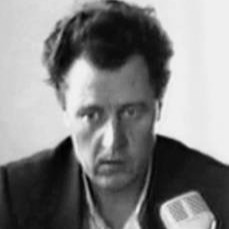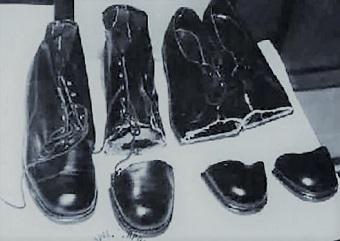
1938 - 1989
Anatoly Yemelianovich Slivko
Summary
Name:
Years Active:
1964 - 1985Birth:
December 28, 1938Status:
ExecutedClass:
Serial KillerVictims:
7+Method:
Arson / Strangulation / CuttingDeath:
September 16, 1989Nationality:
Soviet Union
1938 - 1989
Anatoly Yemelianovich Slivko
Summary: Serial Killer
Name:
Anatoly Yemelianovich SlivkoStatus:
ExecutedVictims:
7+Method:
Arson / Strangulation / CuttingNationality:
Soviet UnionBirth:
December 28, 1938Death:
September 16, 1989Years Active:
1964 - 1985bio
Anatoly Yemelianovich Slivko was born on December 28, 1938, in Izerbash, Dagestan ASSR, Russian SFSR. He was the oldest of two children from a family that struggled financially. When he was born, Ukraine was facing a famine due to Joseph Stalin's policies, and Dagestan was affected as well. Slivko's parents often argued, and his father struggled with alcoholism. Slivko, described as intelligent but often sickly, dealt with insomnia and various childhood illnesses. He spent much of his childhood feeling isolated, reflecting on a life marked by instability, hunger, and the impacts of war.
During World War II, Slivko's father was drafted into the Red Army. Slivko witnessed many horrors during this time, including a traumatic event in 1943 when German forces invaded his hometown. He recalled hiding in a cemetery with other children during bombing raids. They rejected him because of his frail appearance, and he remembered seeing disturbing sights of death around him.
As a teenager, Slivko struggled academically. Despite being bright, he often daydreamed and did not focus on his studies, leading to average grades. During puberty, he became aware of his homosexuality and erectile dysfunction, which caused him great shame. He kept these personal struggles a secret from his family and friends.
After graduating from school in 1956, Slivko sought a scholarship at Moscow State University but did not pass the entrance exam. He then entered military service in the Russian Far East, but his timid nature led to mockery from his peers. His military superiors deemed him unfit for service, and he was discharged in 1960 due to health reasons.
In 1961, he moved to Stavropol Krai and found a job as a telephone engineer. His younger sister soon followed him there and got a job in a local factory. Concerned about his loneliness, she set him up with a young woman named Lyudmila. They started dating and married in 1963. After the wedding, they moved to Nevinnomyssk and were seen as good members of the community.
Though Slivko cared for his wife, he found no physical attraction to her because of his sexual identity and erectile dysfunction. He sought medical help once but felt embarrassed by a nurse's reaction, leading him to avoid further medical advice. Slivko later confessed to investigators that between 1963 and 1980, he and Lyudmila had intimate relations only a handful of times.
In 1961, Slivko experienced a shocking event that would alter his life—he witnessed a traffic accident where a motorcyclist killed a young boy. The aftermath of this accident brought feelings that he could not comprehend. This event became a pivotal moment for him, awakening dark desires that would develop over the years. Not long after, he created a youth club in Nevinnomyssk, where he aimed to encourage local boys to engage in community activities. However, he also used this club as a way to establish connections with the boys.
Throughout his early life, Slivko dealt with the challenges of his upbringing, his sexuality, and the social barriers he faced. He achieved some recognition for his work with local youth, even being elected as Deputy of the City Council in 1977.
murder story
Over the course of 22 years, Anatoly Slivko persuaded forty-three boys to take part in his experiments. He set up a routine that involved photography and filming. In thirty-six cases, he revived the boys after they had lost consciousness. He told them to keep quiet about the experiments, and they went back to their lives without knowing what had happened. However, in seven cases, Slivko became violent. After the boys lost consciousness, he dismembered their bodies, poured gasoline on them, and set the remains on fire. He did this to recreate an experience that had excited him years before. Slivko kept the victims' shoes and the photographs, which he used to satisfy his fantasies until he felt the need to kill again.
Slivko's first victim was a 15-year-old runaway named Nikolai Dobryshev, whom he killed on June 2, 1964. Slivko later claimed that he unintentionally killed this victim when he couldn't revive him after the filming process. After this incident, he dismembered Dobryshev’s body and discarded it in the Kuban River. He burned the films and photographs he had taken, but he kept the boy’s shoes.
In May 1965, Slivko approached his second victim, Aleksei Kovalenko, at a youth club. This time, Slivko killed him on purpose and kept all the evidence. Kovalenko was reported missing, but the police told his parents that he was a runaway.
Eight years later, on November 14, 1973, another boy from Chergid, Aleksandr Nesmeyanov, disappeared. Slivko helped search for Aleksandr, printing missing person posters and organizing searches that avoided the location of the murder.
On May 11, 1975, 11-year-old Andrei Pogasyan vanished. The last person to see him reported that Pogasyan said he was going to film in the forest. Pogasyan's mother recalled that Slivko had previously filmed a project in that area, but after a brief interview, police dismissed him as a suspect.
Slivko's next victim was 13-year-old Sergey Fatniev in 1980. At this point, his actions had become more gruesome. He arranged Fatniev's dismembered body before taking photographs, showing a complete lack of shame for his actions.
In autumn 1984, Slivko killed 15-year-old Vyacheslav Khovistik. His last victim was 13-year-old Sergey Pavlov on July 23, 1985. Sergey told a neighbor that he was meeting the leader of Chergid to act in a home movie. When he disappeared, his parents were informed he was a runaway, but they believed otherwise.
After Pavlov’s disappearance, prosecutor Tamara Languyeva began a detailed investigation. She learned that multiple boys at the youth club had also gone missing. Although the club appeared innocent, her inquiries revealed that many boys had participated in hanging experiments, often losing consciousness.
In December 1985, a formal search of Slivko's home and youth club was authorized. While little evidence was found at his house, the search of a locked darkroom revealed photographs and films showing the hanging, molestation, and dismemberment of his victims. The search also uncovered various weapons, ropes, and shoes belonging to his victims.

On December 28, 1985, faced with the evidence, Slivko confessed. He admitted to murdering seven boys and claimed that the photographs and films were for his fantasy and to relieve his sexual frustration. Over the next few months, he pointed out the buried remains of six victims but could not locate his first victim’s body.
Slivko's trial took place in June 1986. He pleaded not guilty, claiming the deaths were accidents. He was found guilty and sentenced to death. Slivko's appeal was rejected by the Supreme Court.
Just weeks before his execution, he was interviewed about the mindset of serial killers. Slivko provided insights into the behavior of such offenders but showed little understanding of the ongoing investigations of other killers in the area.
On September 16, 1989, Slivko was executed by a single gunshot to the back of the head.